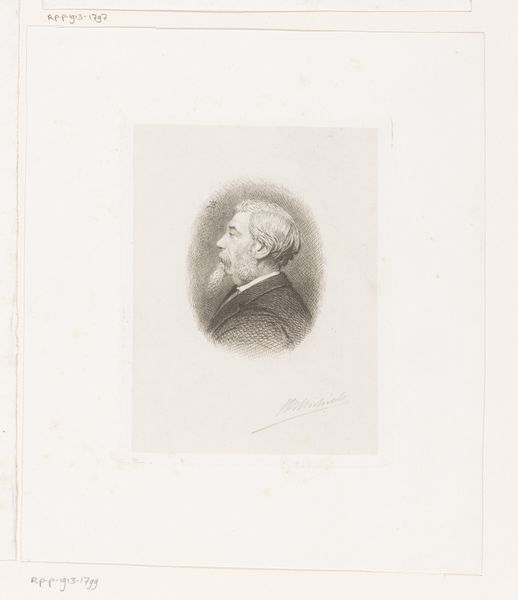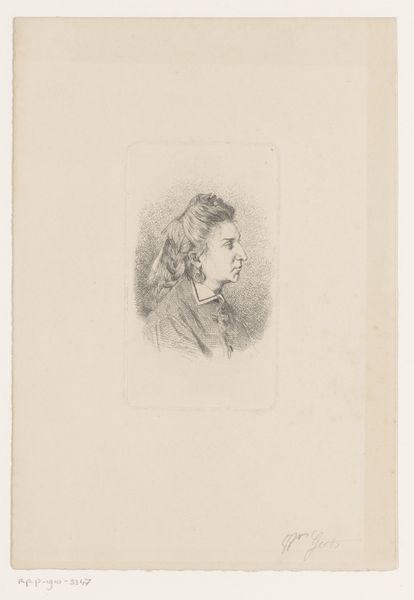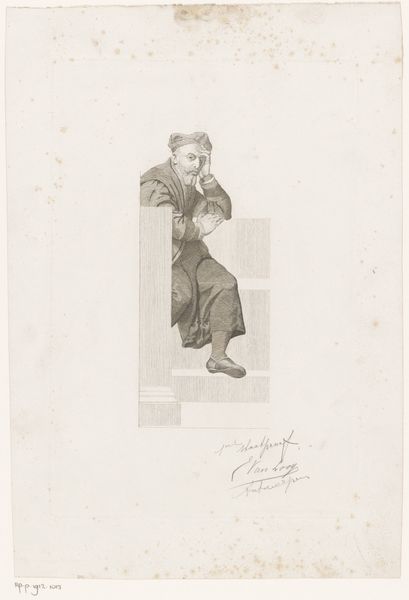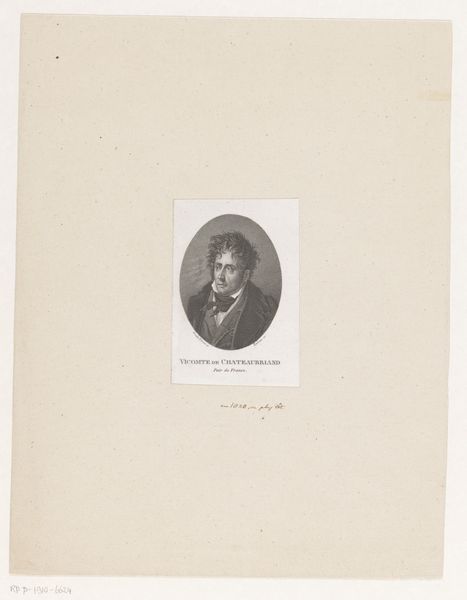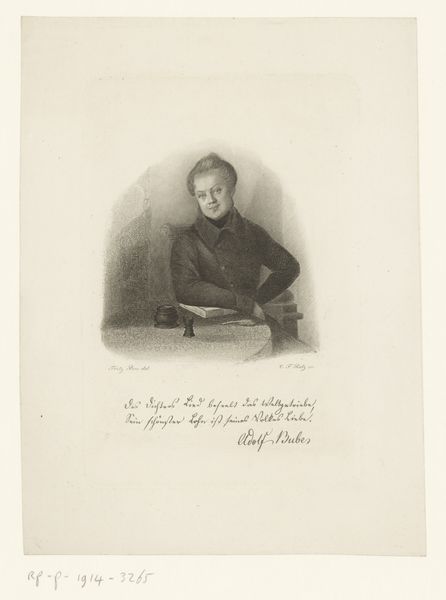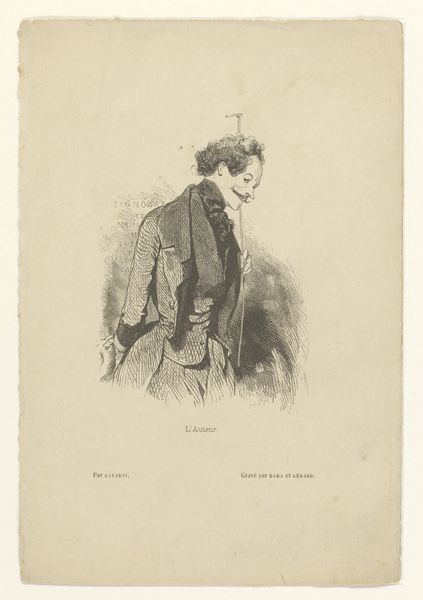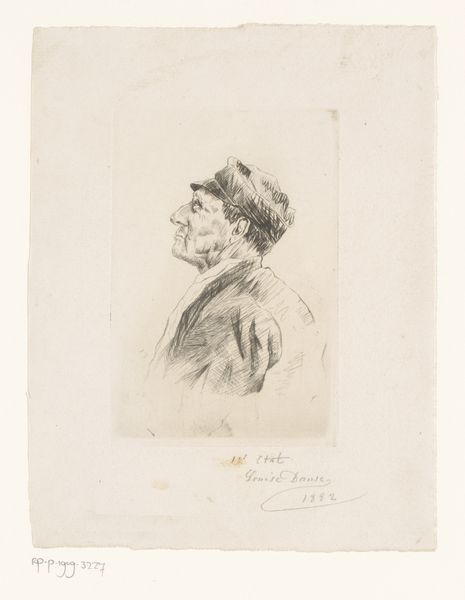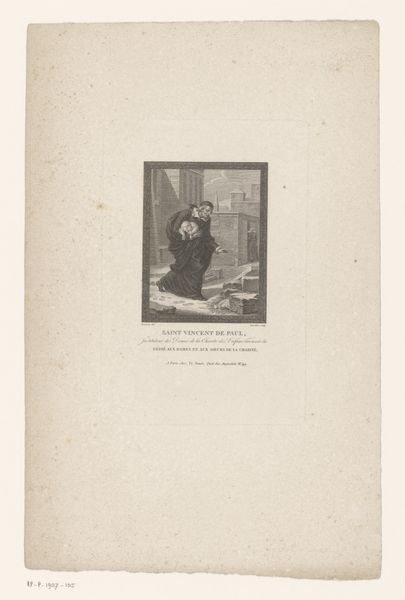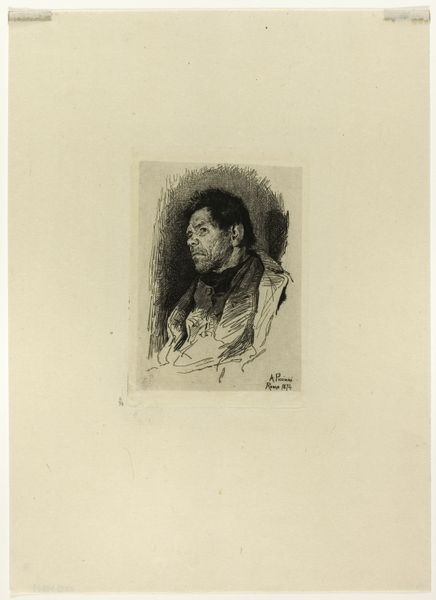
drawing, print, etching, paper
#
portrait
#
drawing
# print
#
etching
#
figuration
#
paper
#
line
#
realism
Dimensions: height 277 mm, width 198 mm
Copyright: Rijks Museum: Open Domain
Art Historian: Editor: Editor: This is “Portret van een onbekende man in een interieur,” or "Portrait of an Unknown Man in an Interior," created by Georges Montenez in 1896. It’s an etching, so a print on paper. There’s something intimate about it. I’m curious – what stands out to you? Art Historian: I am interested in the medium, specifically this etching. Etching is intrinsically tied to industrial advancements, how did this method of production affect who had access to art? To see how the process relates to consumption practices of this work at the time it was made, allows a critical insight into understanding art and its ties to class and the material conditions that determine its production. Editor: I hadn't really considered how that changes who gets to have art! So, the process of etching, being more accessible... does that challenge more traditional ideas of ‘high art’? Art Historian: Precisely! And think about the implications on the labor of the artist and printer to begin to fully see how something seemingly as simple as this print challenged previous assumptions around skill, labour and value in art, thus blurring the lines between art and craft. This print is small - would it have been kept as a treasured piece or discarded among everyday things? This print encourages us to question traditional hierarchies that divide fine art from mere images. Do you notice anything about the subject's expression or demeanor? Editor: He looks pretty serious, contemplative. Maybe even tired? I'm starting to see how all these material details point back to larger social conditions. It’s not just a portrait; it’s about labor, access, and challenging what art is "supposed" to be. Thanks, this has changed my perspective! Art Historian: It is not only the subject portrayed in art but, crucially, about how the modes of production themselves speak volumes about social conditions that underpin any artwork. Glad to have shed light on the fascinating dynamics of how these aspects affect our interpretation!
Comments
No comments
Be the first to comment and join the conversation on the ultimate creative platform.

